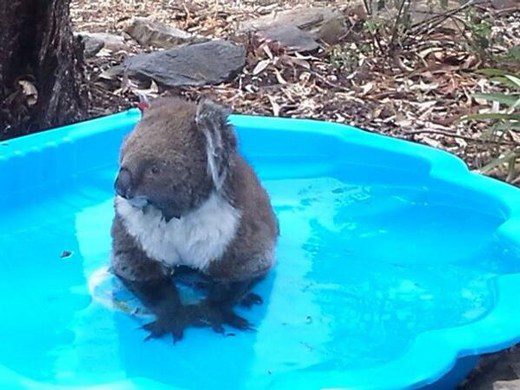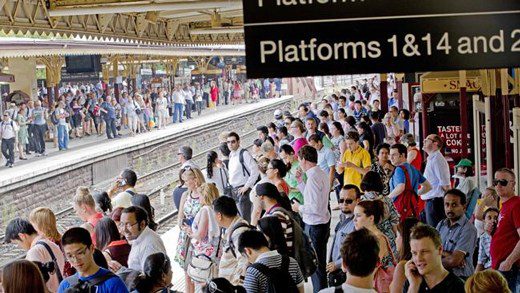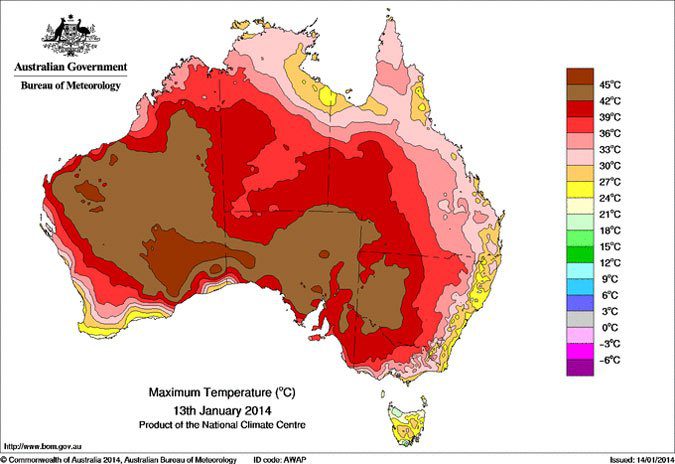After a chilly start to the summer season, a heatwave hit Australia last week. Narrabi in New South Wales saw temperatures rise to 47.8°C (118.04°F). Here in Melbourne, we saw four consecutive days over 40°C (104°F). According to Carl Braganza, Manager of Climate Monitoring at the Bureau of Meteorology, it was the longest heatwave in 100 years. And yet, last week’s heatwave didn’t break last year’s heat record.
It gets really hot in Melbourne every year. It’s not a surprise and, curiously enough, Aussies don’t seem prepared for it.
According to an ABC story released last Friday, the Ambulance Service says it attended 400 heat exposure cases and Victorian paramedics are struggling to cope with the influx of heat-related patients. At least one person died in Melbourne from the heat; a school gardener collapsed and died at the school Wednesday. More deaths have been reported throughout the country not only from heat exhaustion and cardiac arrest, but also due to more than 1000 fire incidents including hundreds of huge bushfires, many of which were sparked by lightening strikes, and have destroyed many homes and businesses. Deputy Premier of Victoria Peter Ryan said the state faced its most challenging fire conditions since 2009 Black Saturday fires, which claimed 173 human lives, injured 5,000, and destroyed more than 2,000 homes.
The extreme heat didn’t stop a number of parents from leaving their kids locked in cars, appalling Ambulance Victoria operations manager Paul Holman, who told the Herald Sun, “If you’re going to lock your children in the car you may as well put a gun to their head. It is just so dangerous, we are dealing with extreme weather and extreme danger for the community.”
Humans aren’t the only one struggling with Australia’s scorching temperatures. Thousands of the native bat known as the flying fox have died with reports that they were just dropping from trees in Queensland. For every flying fox, countless of unseen animals struggled and have succumbed to the weather. ABC and CTVNews have some wonderful must-see photos of animals keeping cool.

Back in Melbourne, nearly all the matches at the Australian Open were suspended Wednesday; check out Mashable’s thirst-inducing photographs of the Australian Open. On the radio talk network 3AW, male callers were complaining to Grubby and Dee Dee about having to wear long-sleeved shirts and ties to work during summer. I suppose it’s because so many homes, businesses, and public transport lack cooling. For those that do have air conditioning, it didn’t do them much good as widespread blackouts were reported due to increased demand in electricity supply. And speaking of public transport, trains and trams were shut down due to extreme temperatures. Theo and I went to the market last Thursday only to find much of it closed. Many businesses will not operate under these kinds of heat conditions.

So, yeah, Melbourne kind of shuts down when it’s too hot, and it’s too hot every summer. I’m not the only person who thinks this is a little crazy. Public Transport Users Association president Tony Morton told The Age, “This is going to happen every summer now. It’s really not good for Melbourne. You can’t have a city that just ceases to operate whenever it gets too hot.”
Since the 2009 heatwave, changes have been made to emergency management procedures and local councils have designed new heatwave plans, but is it enough? The heat impacts the urban infrastructure affecting a variety of services such as the electrical system and the transport network. It also places additional pressure on emergency services who struggle to keep up with the numbers of people succumbing to the heatwave and with the fires. According to the Climate Council report released last week, heatwaves in Australia are becoming more frequent, hotter, and are lasting longer. Australia is going to need extensive upgrading of infrastructure if its cities are going to be made resilient. Of course, that costs money, a lot of it, but one has to wonder how much it costs already – in dollars and in lives – not to do it and go on this way.
As for me, being from Miami, I’m accustomed to hot and humid weather outside, but I can’t think of a home or business in South Florida that doesn’t have cooling. So, in Melbourne, I struggle with the heat just like everyone else. Thankfully, we have good fans and Theo found a great mobile air conditioning unit. It’s small and not powerful enough to cool an entire home, but it’s perfect for the spare bedroom, where I spend much of day working and playing in the metaverse.
How do you stay cool in the hot weather?


After living with the air conditioning in Florida, and the the heating in Glasgow, we were determined to buy a home with reverse cycle air-conditioning/heating when we returned to Australia – but then we fell in love with the view and bought a house with only one heater in the livin room and no air-conditioning. I don’t mind the heat, but I did use a fan during the last week, but the nights were bliss. One evening, my daughter who lived with us when we were in Florida, sat on our balcony with me and we chatted until after midnight, enjoying the balmy night. .
Theo insists I’ll get used to it, but I’ve been here more than a year now and I’m not used to it. I would love to have central heat and central cooling.
It seems to me that many of the newer homes automatically have it these days, so it’s something you can look out for when and if you move. I think it’s essential so we’re looking into what we can do to improve the situation here.
For some reason, this comment fell into moderation. Sorry about that! We have no plans to move, but installing evaporative cooling is on the wish list.